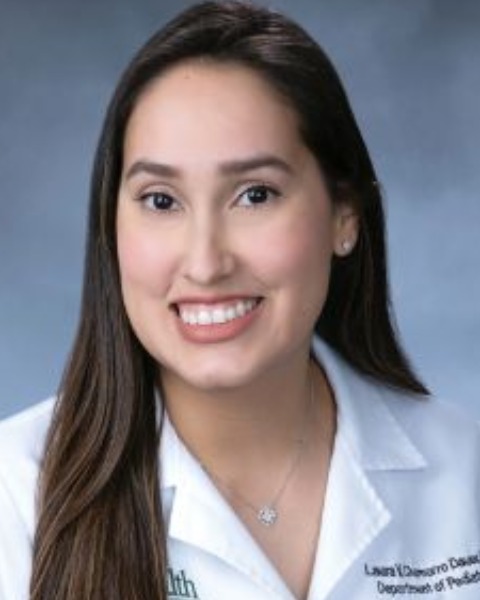Pulmonology
Session: Pulmonology
104 - Optimizing respiratory score utilization: Barriers to respiratory score communication between multidisciplinary pediatric teams
Friday, April 25, 2025
5:30pm - 7:45pm HST
Publication Number: 104.5983
Laura V. Chamorro Dauer, Holtz Children's Hospital Jackson Memorial Hospital, Plantation, FL, United States; Jessica Kuhn, University of Miami Leonard M. Miller School of Medicine, Miami, FL, United States; Melissa Gans, University of Miami Leonard M. Miller School of Medicine, Miami, FL, United States; Sara Cortes, Holtz Children's Hospital Jackson Memorial Hospital, Miami, FL, United States; Hector Chavez, Holtz Children's Hospital Jackson Memorial Hospital, miami, FL, United States; Monica R. Cardenas, University of Miami Leonard M. Miller School of Medicine, Miami, FL, United States

Laura V. Chamorro Dauer, MD (she/her/hers)
Assistant Clinical Professor of Pediatrics
Holtz Children's Hospital Jackson Memorial Hospital
Plantation, Florida, United States
Presenting Author(s)
Background: Respiratory Scores (RS) provide a succinct method of communication within multidisciplinary inpatient teams. Standardized communication via the RS has been shown to facilitate care coordination between physicians, nurses, and respiratory therapists to improve the care of children. However, the potential of the RS remains underutilized due to varying scoring systems and communication gaps.
Objective: As part of a quality improvement project to standardize and maximize RS utilization, our study seeks to identify the barriers to RS communication within multidisciplinary teams.
Design/Methods: Our initiative takes place in a safety net, tertiary care academic children’s hospital. Our stakeholders consist of leaders in nursing, respiratory therapy (RT), pharmacy, IT, residents and attendings who have met monthly from Nov 2023 -Nov 2024. These leaders have determined sequential interventions for RS enhancement: 1) Multidisciplinary medical education on the RS 2) Integration of RS into EMR vitals, enabling physician and nursing input for shared communication 3) Update asthma inpatient pathway decision points using color-coded RS severity. We issued an anonymous survey of pediatric residents (n=67) on knowledge of the RS as well as barriers to its utilizations before two RS educational sessions. We also conducted semi-structured virtual interviews with RTs and nursing leaders to identify barriers to RS utilization.
Results: Our pediatric resident survey demonstrated that although residents understood the RS components (94% residents report knowing the four components of the RS), only 22% of residents report knowing where to find the RS in the EMR. Moreso, 64.4% of residents reported either “never” or “rarely” communicating with RTs when utilizing the RS to wean or escalate therapy. Yet, post educational session this was lowered to 31.1%. Residents reported the largest barriers to using the RS were: knowing where to chart the RS (40.5%), their attendings not using the RS (18.9%) and lack of time to assess the patient (16.2%). Focus interviews revealed that RTs were using a different scoring system, there were no agreed upon values for escalation of care, and that only RTs held access to document RS in the EMR.
Conclusion(s): Our study identifies barriers to Respiratory Score (RS) use among pediatric residents, highlighting the need for EMR interventions like a dedicated documentation area and addressing educational gaps, which must be inclusive of faculty training. Our goal is to enhance care for hospitalized children with asthma by targeting these communication barriers within multidisciplinary teams.

